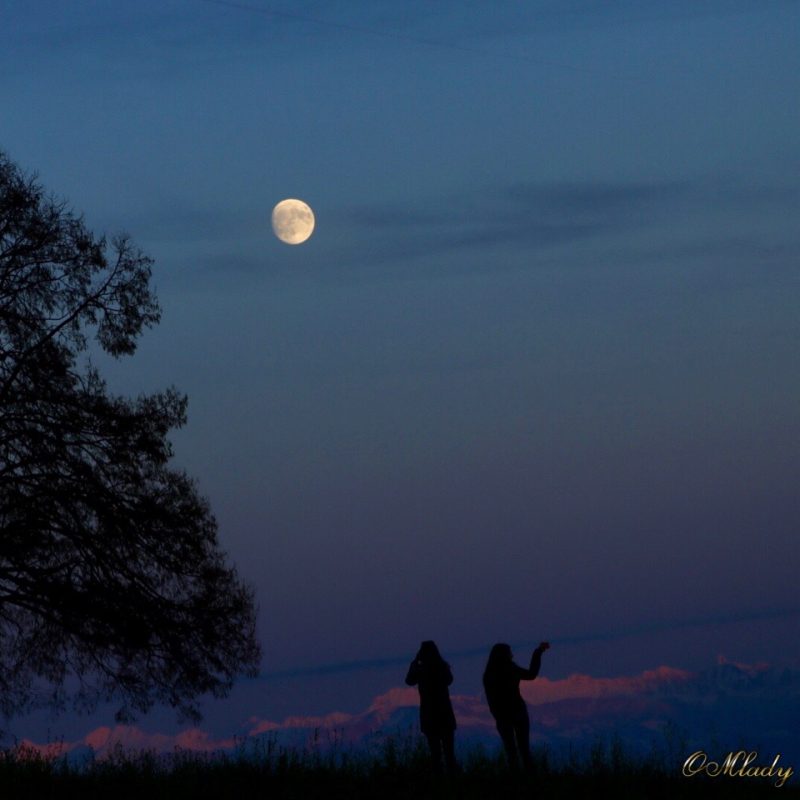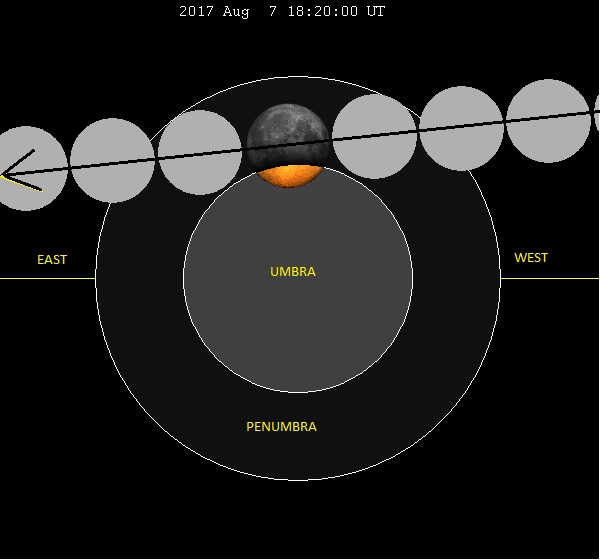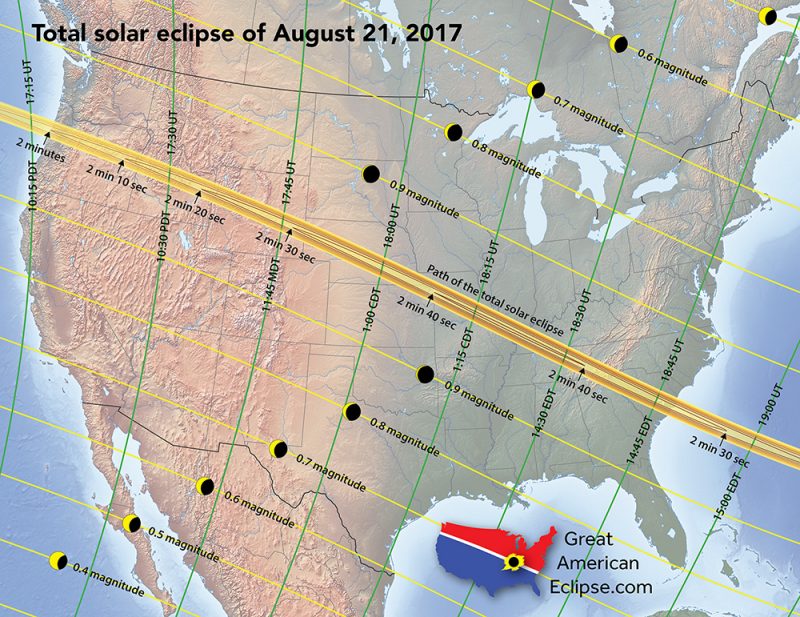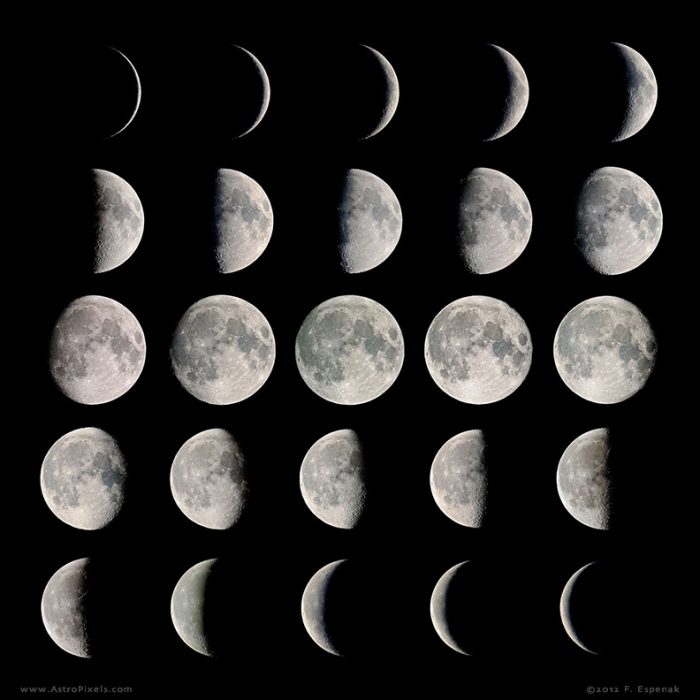
Tonight – July 31, 2017 – and in the coming evenings, people will see a waxing gibbous moon in the evening sky. The half-lit first quarter moon just happened on Sunday, July 30. Waxing means we’re seeing more and more of the moon’s illuminated side, or day side. Gibbous means the moon’s disk appears to us now as more than 50% lit by sunshine. On July 31, the moon is barely more than 50% illuminated, but the moon will be appearing bigger and brighter each evening this week. Click here to know the moon’s present phase.
Full moon will come August 7 or 8, 2017, depending on your time zone. And thus, in 2017, the moon will all but obliterate the annual Perseid meteor shower. At the same time, the moon is now edging toward a lunar eclipse, then a solar eclipse.
At this upcoming full moon, people from Earth’s Eastern Hemisphere can watch Earth’s dark shadow (umbra) darken the southern edge of the August 2017 full moon. Hence that part of the world will see a partial eclipse of the moon.
Click here to learn more about the August 7-8 lunar eclipse.

By the way, a lunar eclipse can only happen at full moon because that’s the only time Earth’s shadow can fall on the moon. More often than not, the full moon eludes the Earth’s shadow by swinging to the north or south of it, thereby missing being eclipsed. But not this month.
Why no eclipse every full and mew moon?
Three weeks from now, the moon’s shadow will hit Earth at the August 21, 2017 new moon. The moon’s dark umbral shadow will cross the U.S. during daylight hours on August 21, to showcase a total eclipse of the sun.
Total eclipse of sun: August 21, 2017
How to watch a solar eclipse safely
Best places to watch 2017 eclipse
How much traffic on eclipse day?

For now, each day after sunset, you’ll see more of the moon’s disk as sunlit. Another way to say this is, you’ll see more of the moon’s day side. Meanwhile, the dark part of a waxing gibbous moon – the part we can’t see well at this moon phase, because it blends with the dark of our own night, or blue of our own day – is the moon’s night side. Just as on Earth, night on the moon happens to be that part of the moon submerged in the moon’s own shadow. How much of the moon’s night, or day, side is visible from Earth depends on the lunar phase.

Bottom line: The waxing gibbous moon is waxing toward full moon on August 7-8, obliterating the annual meteors showers and edging toward a lunar eclipse, then a solar eclipse.











